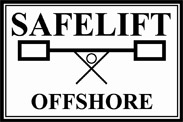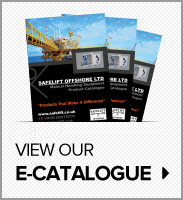 |
|
|
Home » Legislation
|
||

Lifting Operations and Lifting Equipment Regulations 1998Introduction This guide provides information about the legal requirements of the Lifting
Operations and Lifting Equipment Regulations 1998 (LOLER) which came However, it is important that you refer to the Regulations and accompanying Approved Code of Practice to familiarise yourself fully with your duties. What is LOLER? In the main, LOLER replaced existing legal requirements relating to the use of lifting equipment, for example the Construction (Lifting Operations) Regulations 1961, the Docks Regulations 1988 and the Lifting Plant and Equipment (Records of Test and Examination etc) Regulations 1992. Many aspects of LOLER should therefore be familiar to you. The Regulations aim to reduce risks to people’s health and safety from lifting equipment provided for use at work. In addition to the requirements of LOLER, lifting equipment is also subject to the requirements of the Provision and Use of Work Equipment Regulations 1998 (PUWER). What does LOLER do? Generally, the Regulations require that lifting equipment provided for use at work is:
What equipment is covered by the Regulations? Lifting equipment includes any equipment used at work for lifting or lowering loads, including attachments used for anchoring, fixing or supporting it. The Regulations cover a wide range of equipment including, cranes, fork-lift trucks, lifts, hoists, mobile elevating work platforms, and vehicle inspection platform hoists. The definition also includes lifting accessories such as chains, slings, eyebolts etc. LOLER does not apply to escalators, these are covered by more specific legislation, ie the Workplace (Health, Safety and Welfare) Regulations 1992. If you allow employees to provide their own lifting equipment, then this too is covered by the Regulations. Do the Regulations apply to me? If you are an employer or self-employed person providing lifting equipment for use at work, or you have control of the use of lifting equipment, then the Regulations will apply to you. They do not apply if you provide equipment to be used primarily by members of the public, for example lifts in a shopping centre. However, such circumstances are covered by the Health and Safety at Work etc Act 1974 (HSW Act). While your employees do not have duties under LOLER, they do have general duties under the HSW Act and the Management of Health and Safety at Work Regulations 1999 (MHSWR), for example to take reasonable care of themselves and others who may be affected by their actions and to co-operate with others. The Regulations cover places where the HSW Act applies - these include factories, offshore installations, agricultural premises, offices, shops, hospitals, hotels, places of entertainment etc. What do the Regulations require me to do? You need to ensure that in using any lifting equipment the requirements of LOLER are met. For example, you should ensure that all lifting equipment is:
How do the Regulations relate to other health and safety legislation? The requirements of the Regulations need to be considered alongside other health and safety law. For example, section 2 of the HSW Act requires all employers to ensure, so far as is reasonably practicable, the health, safety and welfare of all their employees. Similarly, the MHSWR contain important duties which relate to the carrying out of a risk assessment to identify measures that you can take to eliminate, or reduce, the risks presented by the particular hazards in your workplace. Other more specific legislation, for example the Personal Protective
Equipment at Work Regulations 1992, may also apply. Under these particular How are the Regulations enforced? Health and safety inspectors enforce the Regulations. If you have duties under LOLER you will be given time to assimilate the new requirements. However, where there are serious risks, or the requirements are not new, inspectors will be prepared to take firm enforcement action.
|
| Copyright © 2011 Safelift Offshore. All rights reserved. | Sitemap | Google+ |
| Web design, development and hosting by MTC
Media Ltd. |
|





